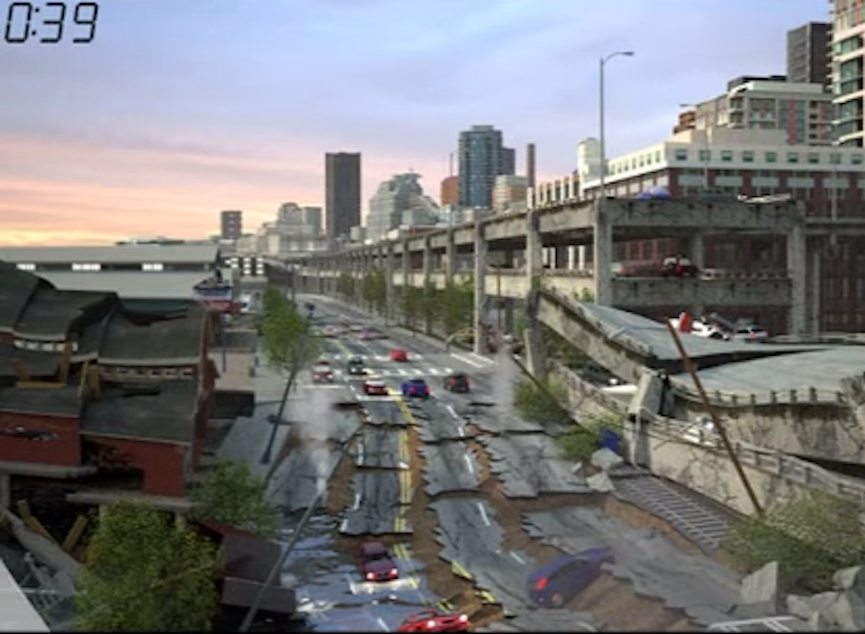Hey, when is the Pacific Northwest getting our earthquake warning system?

Seconds before last week's 7.1 magnitude earthquake in Mexico City, people got an alert that the ground was about to start shaking. The Sistema de Alerta Sismica Mexicano, or SASMEX, gives people a chance to get under a desk or leave a building before the shaking begins.
That got KUOW listener Eli Waite wondering, what's the deal with our earthquake warning system?
We turned to Bill Steele from the Pacific Northwest Seismic Network at the University of Washington to answer some of our earthquake questions.
What are we doing in the Pacific Northwest about earthquakes?
The University of Washington has developed with its partners at the California Institute of Technology, U.C. Berkley and the USGS a system called ShakeAlert. It has been in operation here in the Pacific Northwest since April, and when the ground shakes at a magnitude 3 or above an alert is issued.
Sponsored
But don't get too excited. ShakeAlert is still in test mode and those alerts are only going to testers like Bill Steele and his fellow researchers.
Is this alert a text message?
According to Steele, no — text messages are too slow. Right now he has an app on his phone that gets an alert.
They are working with the telecom industry and cell phone manufacturers to make sure they can speed up the alert system in the next generation of cell phones.
The alert will also be sent out to the operation centers of businesses and state and city agencies. Eventually they hope to also get the alarm piped through school PA systems.
Sponsored
Steele explained by the time the alert system rolls out there will be a whole "garden" of applications to send this message out to the people.
When will this start to roll out?
According to ShakeAlert website, three things need to happen before the system goes public: (1) develop the technology, (2) educate the public on what the warnings mean, and (3) invest in the infrastructure to improve rapid detection.
Steele explained that so far the technology is working beautifully here in the Pacific Northwest. Soon they plan to roll out the system with water and waste districts first, because they already have some experience testing the alert system.
They hope to bring it to the public soon as long as they have the proper funding.
Sponsored
Why are Mexico and Japan so far ahead of us?
Unfortunately both Mexico and Japan suffered very deadly earthquakes in the last two decades. After the 1985 Mexico City earthquake and the 1995 Kobe earthquake, both governments decided "enough was enough" and they invested in developing and deploying earthquake warning systems.
Steele explained that now it's our turn.
"We have the technology, we have the know how, we can do it, but we have to have the political will to fund the system," he said. "If we can do it before our major disaster, then that's a great thing."

